How to grow hellebores: top tips for growing these beautiful winter blooms
Learning how to grow hellebores will reward you with flowers even in the snowy depths of winter
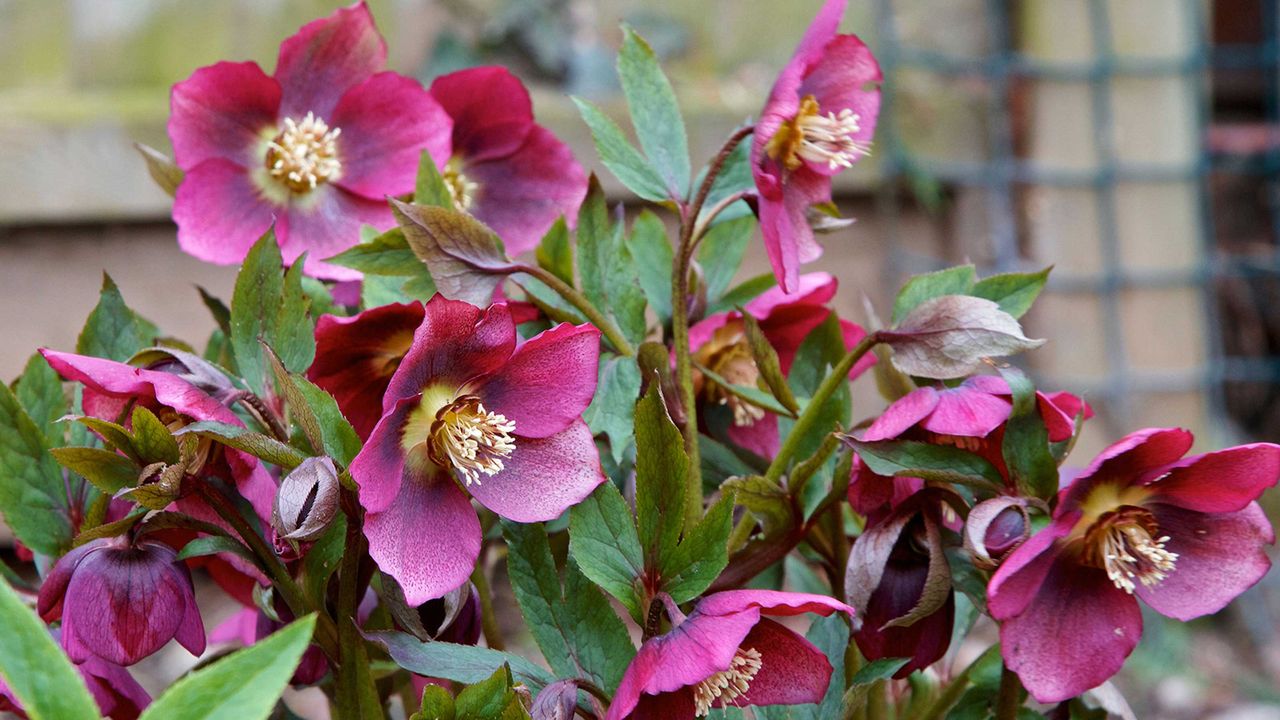

Learn how to grow hellebores and you can enjoy their stunning display throughout the coldest months. The clumps of pretty downward-facing flowers almost glow in the winter sun. Plus, they're perennial, meaning they'll come back year after year.
Hellebores are well-loved – and is it any wonder? If you're looking for flowerbed ideas that'll stand up to low temperatures, then they're a winning choice, plus they can be grown in containers, too. They also tolerate tricky, shady areas beneath trees and are fairly low maintenance – as long as you don't let them dry out. And, the winter interest they add to the garden 'isn't confined to flowers, as hellebores also have attractive evergreen foliage that adds impact all year round,' says gardening expert Tamsin Hope Thomson. 'Even when the plants are not in flower, the large leaves will add useful ground cover.'
There are lots of varieties to choose from – from elegant single blooms to semi-doubles and doubles. There's also a wide range of colors available. 'Blooming in shades of red, pink, green, yellow and cream, as well as smouldering blacks and crisp whites, they brighten the garden from January to April and provide winter-foraging bees with much-needed nectar,' says gardens expert Hazel Sillver for Amateur Gardening.
Simple tips on how to grow hellebores for stunning winter displays
Want to learn how to grow hellebores to add to your winter garden ideas? Here are some top tips to help you get started:
- Plant your hellebores in rich and moist but well-drained soil, conditioned with well-rotted garden compost.
- The best garden position for your hellebores is between deciduous trees and shrubs, where plants are lightly shaded but not short of water. They are also happy in sun where soil is moist.
- Give each plant plenty of space. Use gaps in between for winter aconites, snowdrops or Iris reticulata, and for later, primroses, crocuses, and early daffodils.
- Remember to water them regularly, particularly in the first year.
- Mulch annually in spring or fall with leaf mold or compost – you can find plenty of tips on mulching in our guide.
- If you're growing hellebores as part of your container gardening ideas, plant them in John Innes No. 3 mixed with 30 per cent by volume peat-free multipurpose compost and 10–20 per cent of perlite or horticultural grit, as suggests the RHS.
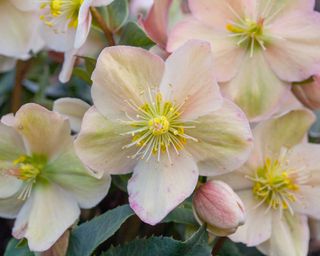
The 'Shooting Star' hellebore at RHS Hyde Hall
When should you plant hellebores?
Hellebore plants can go in the ground at any time, as long as the weather is damp. 'They need a lot of moisture during their first year,' explains Hazel Sillver for Amateur Gardening. 'So, if it's hot and dry, it's best to wait until rain sets in.'
However, you will find them in garden centers more often in winter and spring. 'Because so much time and work go into the process of raising hellebores, they can be expensive. But, when they open in the gloom of January, they are worth every penny,' says Hazel.
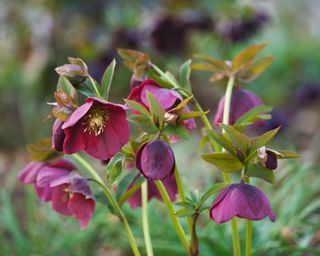
A splash of color on a winter's day
Can you grow hellebores from seed?
If you're on the lookout for cheap garden ideas, you'll be pleased to know that it's possible to grow hellebores from seed. But, it is a long process and flowers will not usually appear until two years after germination.
- Sow in July or August, thinly, on a tray of compost (or in a pot), and cover with fine grit or perlite.
- Leave outdoors, but keep moist and cover with netting or chicken wire to prevent mice from eating the seeds.
- Germination takes place in winter. In the new year, once two leaves have appeared and they are large enough to handle, transfer your seedlings to small pots.
You can find more advice on how to grow flowers from seeds in our guide.
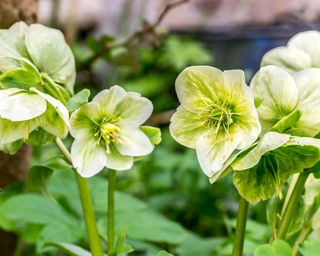
Hellebores come in a wide spectrum of shades
How to care for hellebores
Hellebores are really quite low maintenance, as long as you keep them well watered and mulched.
Using your best secateurs, remove damaged or disfigured leaves in autumn and just before flowering to help avoid viral and fungal diseases.
You can also remove the old leaves at any point during late winter and early spring. In fact, doing so will make way for the flowers and new leaves to come through. If you look closely at your hellebores, you should be able to distinguish between the old leaves left from last year and the new leaves that have grown this year. The old leaves will be coarser, darker green and probably blotched and a bit tatty.
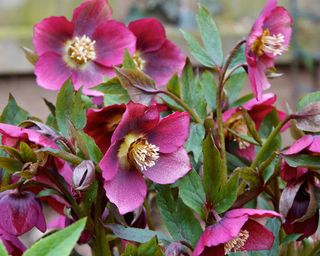
Hellebores brightening up the border
How to propagate hellebores
Another great thing about hellebores is that you can get a lot more from one plant by propagating.
Once you have good plants, you can lift and divide them. September or October is a good time to do this, and all your new plants will be identical to their parent. Use a sharp knife to cut the dense clump into sections, each holding several leaves and new growths.
Hellebores also happen to be prolific self-seeders. So, if one you particularly like is surrounded by its seedlings, pot them up and grow them on before planting elsewhere in the garden.
You can find more info on propagation in our guide on how to take cuttings from plants.
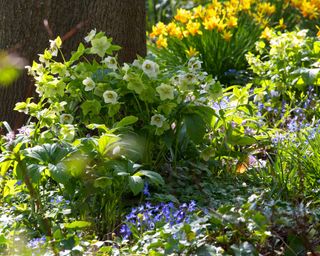
Try planting hellebores beneath a tree
Problems to look out for when growing hellebores
Leaf spot is a fungal problem with hellebores that spreads when raindrops splash up onto the leaves from the soil, carrying spores. Symptoms are brown patches of dead material on the leaves that can fall through, leaving the leaves in holes. Stems can also be infected, causing plants to collapse and tiny black fungal structures may be seen.
Halt the spread by removing and disposing of all dead and infected material (bear in mind that it's no good for composting) or by using fungicide. Regular mulching also keeps spores buried so they are less likely to be splashed up onto plants.
Hellebores can also attract aphids – but they're simple to deter. You can find lots of tips on how to get rid of aphids in our guide.
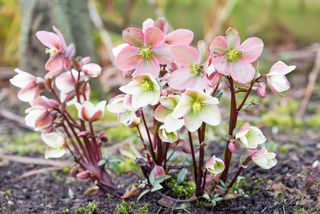
A beautiful variety with a tint of pink
What are good planting partners for hellebores?
'Although hellebores look good on their own planted beneath shrubs and trees, they also make good planting partners for early flowering bulbs such as snowdrops, narcissi, and Cyclamen coum, as well as ferns and evergreens,' says Tamsin Hope Thomson.
'Hellebores are woodland plants so are best planted in well-drained soil in partial or dappled shade,' she continues. There are lots of other lovely woodland plants for gardens that would make good accompaniments.
'If you don't have much space, hellebores are great in a winter container where you could try planting them with evergreen grasses, ivy, heather, or pansies to cheer up the entrance to your home.' You can find more of the best winter plants for pots in our guide.
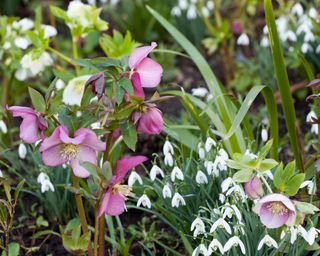
Hellebores and snowdrops make a delightful pairing
Where to buy hellebores
Keen to buy some of these beauties now that you've learned how to grow hellebores? Our quicklinks below will take you straight to leading suppliers.
Where to buy hellebores in the UK
- Shop hellebores at Amazon
- Shop hellebores at Crocus
- Shop hellebores at Dobies
- Shop hellebores at Suttons
- Shop hellebores at Thompson & Morgan
- Shop hellebores at You Garden
Where to buy hellebores in the US

Teresa has worked as an Editor on a number of gardening magazines for three years now. So she is lucky enough to see and write about gardening across all sizes, budgets and abilities. She recently moved into her first home and the garden is a real project! Currently she is relishing planning her own design and planting schemes. What she is most passionate about when it comes to gardening are the positive effects it has on our mental health to grow and care for plants, as well as being great for the environment too and help provide food and shelter for wildlife.
-
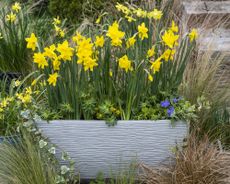 An Update on Gardeningetc
An Update on GardeningetcA word from our publisher
By Beth Murton Published
-
 Do you need to chit potatoes? Find out what the experts say
Do you need to chit potatoes? Find out what the experts sayGrow Your Own Learn how to chit potatoes before planting them in the ground and you’ll be on your way to getting an earlier and bigger harvest
By Drew Swainston Published
